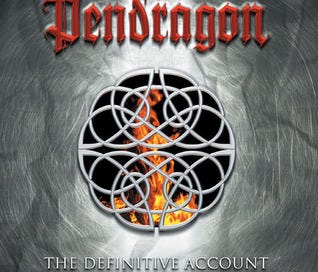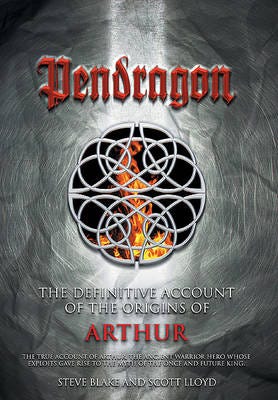My Rating: ★★★☆☆
Intro & Summary
Pendragon, by Steve Blake and Scott Lloyd, is a quite long and detailed examination of original Welsh sources in order to geographically place the original Arthur figure who became the legendary Once and Future King we know today.
Later medieval sources are mentioned and discussed, particularly the one that really started the Arthurian Legend as we know it: Geoffrey of Monmouth’s Historia Regium Britanniae (or Histories of the Kings of Britain). But Geoffrey was writing for Norman patrons, and his work, along with much of what followed in the Arthurian canon, such as it is, co-opts the figure of Arthur and turns him into something far grander and far-reaching than he actually was.
Instead, Blake and Lloyd focus on earlier Welsh sources and past and current place names to identify who the historic Arthur might have been, and where he lived and fought.
Blake, Steve, and Scott Lloyd. Pendragon : The Definitive Account of the Origins of Arthur. Guilford, Conn.: Lyons Press, 2003.
Readability
I’ll get this out right away: This is not a book for the general public with no background in scholarship. In fact, I think most scholars might bounce of this one, too. While Arthurian Legend is constantly under discussion throughout, Pendragon is for an audience who is deeply interested in Welsh geography and place names, who are also at least familiar with older Welsh stories and poems, such as Culhwch and Olwen.
I honestly think the only reason I was able to keep up as well as I did is because I’ve read C&O multiple times (I find it fascinating) and have lived in Wales for several years now. I have some idea of how things should be pronounced (at least with a southern dialect) and so could read all the Welsh names in my head without too much difficulty.
I actually thought the writing was quite accessible at first, until I mentioned that to my mom, who gave me this book from her own library. She made two attempts to read it in the past and bounced off both times, we think even before the part where I thought “Aha! This is where it gets really scholarly.” (around Chapter 5)
If you still think this book looks really interesting, I suggest seeing if you can find it in your local library. Chapter 1 is a literature review, which I think is the easiest and general part of the book to read; it gives a really good overview of sources from the angle of looking more toward the older Welsh stories and poetry. Those familiar with Geoffrey’s Historia could probably get through Chapter 2 just fine, but from there the text gets more and more dense.
Learning
The discussions of sources themselves didn’t teach me much. I’ve a strong interest in Arthurian Legend, so I’ve read on the subject quite a bit. For those interested in an extensive overview, I highly recommend Dr. Dorsey Armstrong’s Great Courses lecture King Arthur: History and Legend. It’s on Audible, if you’ve got it.
But what about all that geography? Did I learn anything from that?
WELL.
I closed Pendragon quite convinced by Blake and Lloyd’s findings. Based on information gleaned from various post-Roman Welsh sources, they concluded three major things about the historical Arthur:
He was likely one man, not a legendary figure combining several.
He was not a king but a warlord, probably leading the warband of a Welsh king.
He was mostly active in North Wales, and almost certainly fought other Britons and maybe the Irish but probably not any Saxons.
Because Arthurian Legend is so rarely stripped down to its Welsh origins, we tend to be overloaded with that propaganda I mentioned before, as well as continental additions.
Previous scholarship has also suffered from mistranslation and misunderstanding of Welsh and Latinised Welsh words (Geoffrey might have mistranslated a few things on purpose to further his narrative), not to mention the modern notions and theories brought in to fill in gaps. The Victorians were really bad about this, and the history field in general is still trying to unpick a lot of that in both past scholarship and current practise.
So not only did I learn a bit about some Welsh sources I’d never encountered, and a lot about Welsh geography and place names that derive from these sources and the people and deeds described in them. I also learned a bit about historical scholarship in practise when using ancient, fragmentary sources to attempt to piece together a coherent best guess about the past. And as a total package that was pretty cool.
Would I Read It Again?
It’s not really a simple “yes or no” answer because, while Pendragon was a much easier and more enjoyable read than January’s book, it’s not something I think I’d want to sit down and read cover to cover again.
That said, there’s a lot of interesting information in there, and I made a lot of notes with page numbers both for the purposes of putting together this review and just for me to go back to. So I’ll most likely return to Pendragon as I continue to study Arthurian Legend, but not to just sit and read all the way through.




